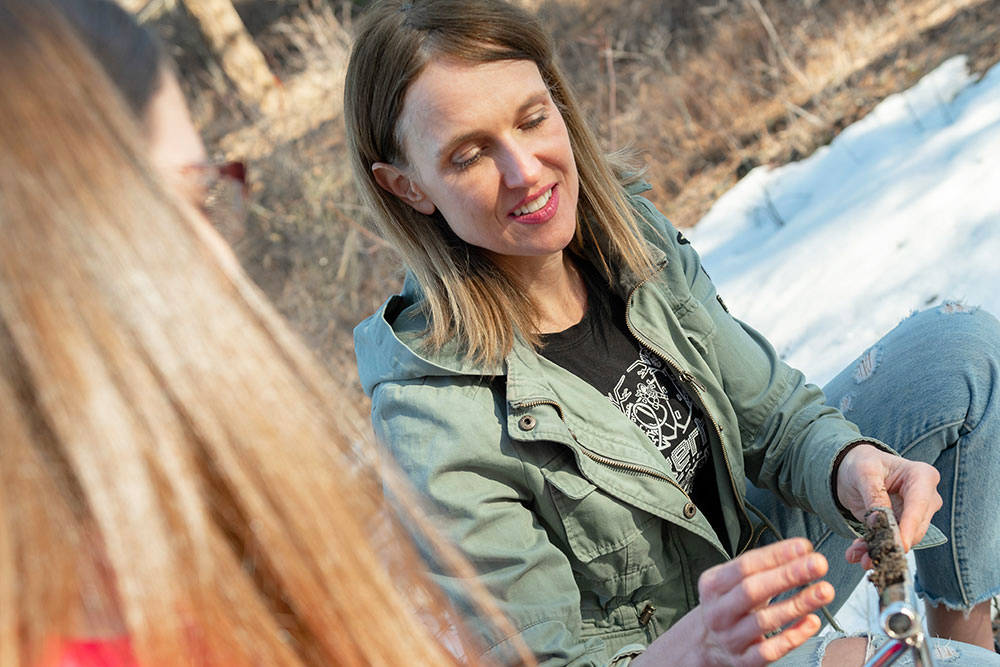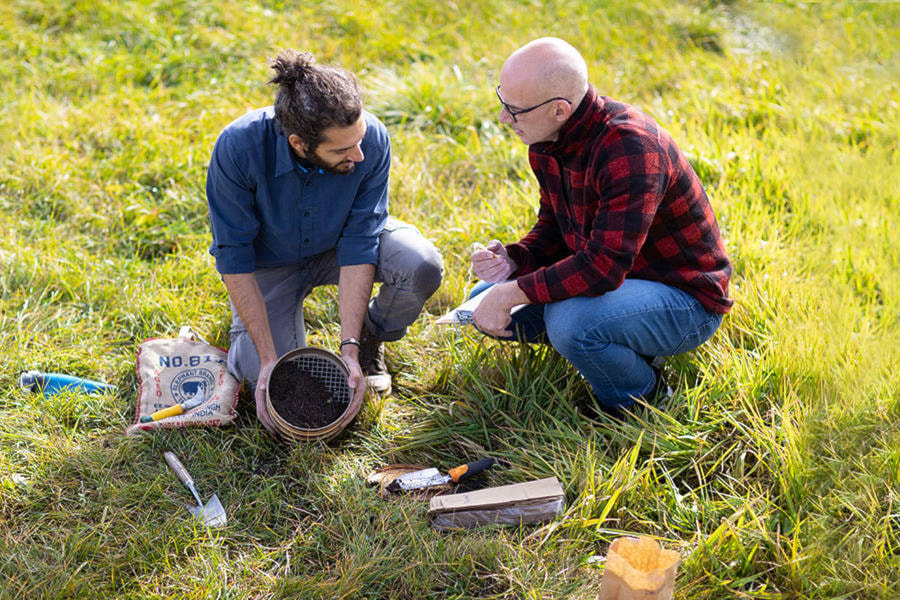“Our Earth is not a renewable resource,” says Miranda Hart, a professor in the Irving K. Barber Faculty of Science at UBC Okanagan, who studies microbes that co-exist with plants. Similar to human gut microbiome, plants have a root microbiome.
A researcher who aims to protect the integrity and health of the dirt beneath us, Hart recognizes that soil biodiversity is a critical indicator of soil health. “Functional ecosystems require biodiversity in our soil. If we reduce soil biodiversity, we can lose entire ecosystems,” she explains.
Hart can list many historical examples where crop failures have resulted from lack of proper soil maintenance. The deforestation and consequential soil erosion on Easter Island is but one. The famous statues of heads are actually full figures, buried by erosion when forests were lost.
Hart’s research team is working to better understand how to improve soil biodiversity in managed systems, either by manipulating plants or by adding microbial fertilizers.
Andrew Richards, a master’s student with Hart, is looking at the effects of incorporating other plants or cover crops, alongside grape vines to manage soil erosion, soil quality and disease progression.
“There’s been increasing public demand for sustainable wine production methods to fight fungal diseases that target grapevine roots,” says Richards. “With the ease of planting between vine rows and on footpaths, a cover crop could be the right solution.”
In his examination of the soil, Richards found it was richer in microbes when grapes were grown together with the diverse cover crops than without. More microbes in the soil means healthier plants.
Identifying the soil components required to sustain crops and forests has become a global priority. Soil scientists, such as Hart and her team, have rallied to generate and communicate soil knowledge, contributing to a United Nations report on the current status of biodiversity.
“The fight against climate change and biodiversity loss can seem overwhelming,” she says. “I believe we can do this one field at a time.”
To learn more, read the full story here!

